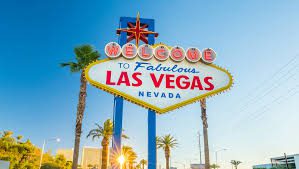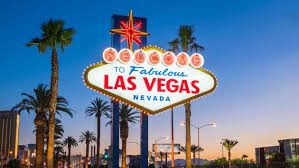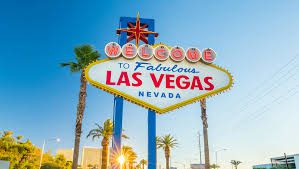What are the pros and cons of rail transportation?
Road vs. Rail
|
Pros |
Cons |
| Rail |
Freight trains carry more freight at the same time compared to road transport |
Possible delays in cross border due to change of train operators |
| On average, long-distance freight movement is cheaper and quicker by rail |
Not economically viable across shorter distances |
What goods are shipped by train? In all, 52 percent of rail freight car loads consist of bulk commodities such as agriculture and energy products, automobiles and components, construction materials, chemicals, equipment, food, metals, minerals, paper, and pulp.
Why is rail better than road? Rail has lower fuel costs compared to road transport, especially when shipping a high volume of freight. Rail also has less costs associated with drivers and typically has better costs for drop trailer programs. Shipping via train is more environmentally friendly. Trains burn less fuel per ton mile than trucks.
Which mode of transport is more convenient? Rail transport is the most convenient means of transportation in the Northern plain, because these plains are densely populated, rich in agriculture resources and construction of railways is easy due to gentle slope of the land.
What are the pros and cons of rail transportation? – Additional Questions
What are the two types of road transport?
Discover 6 Types of Road Cargo Transportation
- Curtain Sided Transportation.
- Flatbed Transportation.
- Temperature Controlled Transportation.
- 4. Box Truck Transportation.
- Car-Carrying Transportation.
- Road Cargo Transportation – Tanker Transportation.
- Final Thoughts.
How efficient is rail transportation?
According to the AAR, moving freight by rail is 4 times more fuel efficient than moving freight on the highway. CSX trains can move a ton of freight approximately 492 miles on a single gallon of fuel. Efficient use of fuel means fewer greenhouse gas emissions for our planet.
How long can a freight train get?
U.S. average: 6500 feet and climbing. 18,061 feet–but there’s no legal limit on freight train length in the U.S. Average 70-car freight hauling 3000 tons. 295 cars with 618 piggy-backed shipping containers hauling 15,500 tons.
How far can a train go without refueling?
With the introduction of tenders (a special car containing water and fuel), trains could run 100–150 miles (160–240 km) without a refill.
How many containers can a train haul?
Three-pack and five-pack well cars
The containers can be double-stacked, which means up to 10 containers can be carried on one railcar. Containers on well cars can be 20, 40 or 53 feet in length.
Are trains more cost efficient than trucks?
On average, railroads are three to four times more fuel efficient than trucks.
Which mode of transportation is the fastest for long distances?
Air transport is the fastest way to move products, especially over long distances or overseas.
How long is a railroad container car?
Boxcar Specifications
|
50′ Standard |
60′ Standard |
| Exterior Length |
55′ 5″ |
67′ 11″ |
| Exterior Width |
10′ 7″ |
10′ 6″ |
| Cubic Capacity |
5,238 ft. |
6,085 ft. |
| Freight Capacity |
70 – 100 tons |
70 – 100 tons |
How much does a train box car cost?
Boxcars cost $135,000 each, and they have higher dwell times and lower turns than much more profitable unit trains—large trains with similar equipment that go point to point without stopping.
How much does a hopper rail car cost?
Today, the typical freight railcar is in the $100,000 to $150,000 range.
What is a hopper train car?
A hopper car (US) or hopper wagon (UIC) is a type of railroad freight car used to transport loose bulk commodities such as coal, ore, grain, and track ballast. Two main types of hopper railcars: covered hopper cars, which are equipped with a roof, and open hopper cars, which are open top.
Are there still train hoppers?
“Even crew members (can’t) hop on and off moving trains.” Last weekend, Britt, Iowa, hosted the National Hobo Convention, a mainstay there since 1900. Genuine train hobos attended throughout the 20th century, but in the absence now of real hobos, the event has gone country-fair mainstream.
How long is a railroad hopper car?
Covered Hoppers Comparison
|
Small |
Food-Grade |
| Car Length |
42 ft. |
60 – 65 ft. |
| Max Height |
15.5 ft. |
15.5 ft. |
| No. of Compartments |
2 |
3 – 4 |
| Loading Hatch Types |
Circular or Trough |
Circular or Trough |
How are hopper cars unloaded?
Covered hoppers rely on gravity for unloading. Because covered hoppers have sloped floors with doors at the bottom, product flows through easily when the doors are opened. This method of unloading is referred to as the “sliding gate” or “self-clearing” method.
What do covered hopper cars carry?
What Is a Covered Hopper Used For? Covered hoppers are typically used to ship dry bulk commodities, like corn, wheat, barley, fertilizer, soda ash, cement, sand, roofing granules, rice and sugar.
What is the difference between a hopper car and a gondola car?
Hoppers are used to haul bulk freight such as coal, gravel, and grain; they have either several discharge hatches or a collapsible bottom for rapid unloading. Gondola cars have fixed bottoms and must be unloaded from above with the help of a crane;…
How many cars fit in an Autorack?
Efficiency – Autoracks allow shippers to move a large number of vehicles at one time. Thanks to the autorack design, some can carry up to 26 vehicles at once, while trucks typically carry about nine vehicles at a time.



